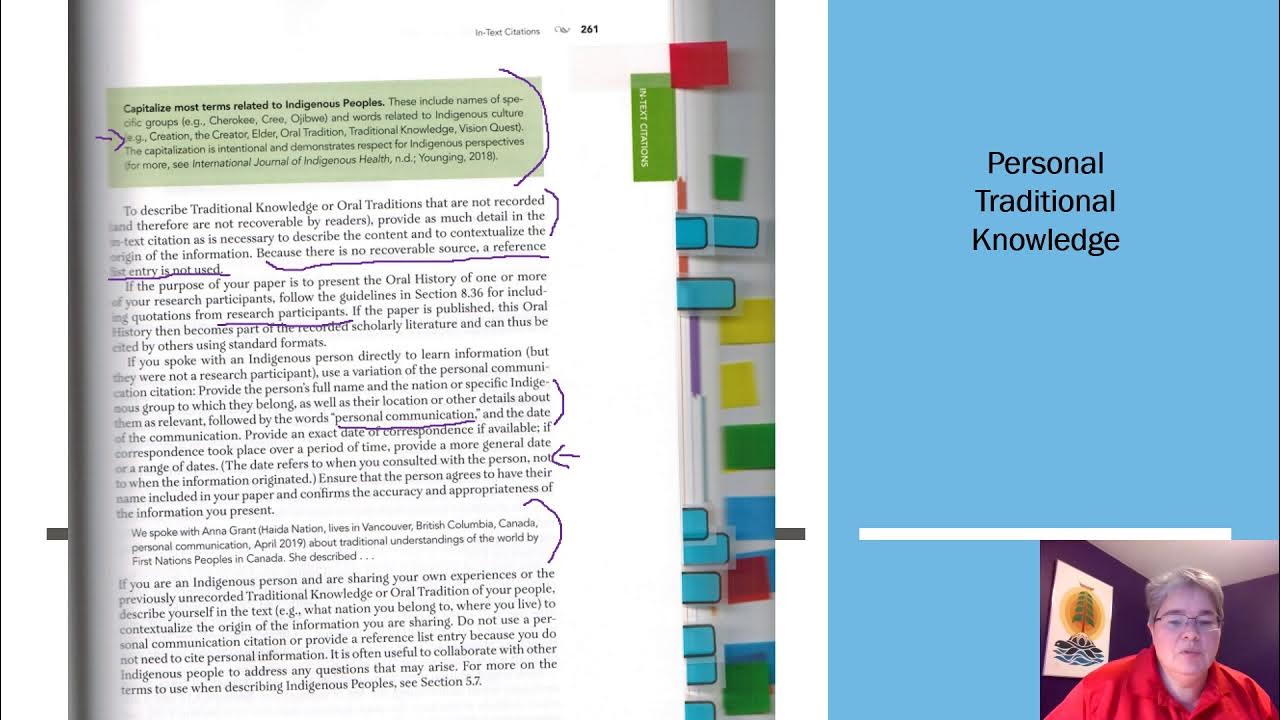The Basics of Citing and Referencing in APA 7th Edition
Summary
TLDRChelsea Siebern's video offers an insightful tutorial on the essentials of academic writing, specifically focusing on the connection between reference list entries and in-text citations in APA format. She explains the importance of crediting sources to avoid plagiarism and provides templates and examples to illustrate the correct citation process. The video also covers the distinction between paraphrasing and direct quoting, along with the two citation styles: parenthetical and narrative. For those seeking further assistance, Chelsea promotes her live workshop 'APA Made Easy' to clarify these concepts and enhance academic writing skills.
Takeaways
- 📚 The video discusses the importance of understanding the relationship between reference list entries and in-text citations in academic writing.
- 🔗 In-text citations link the material in an academic paper to the reference list entry, which in turn points to the original source of the information.
- 📝 Reference list entries must include four elements: author, date, title, and source to be considered correct and complete.
- 👩🏫 In-text citations typically consist of two elements: the author and the date, with the source locator added when necessary to specify the location within the source.
- 📖 The video explains that paraphrasing is the most common way to cite material, accounting for 98% of citable material, while direct quotes should be used sparingly.
- 💬 Paraphrasing involves expressing another author's ideas in your own words, while direct quoting requires using the exact words as found in the original source.
- 📝 The script distinguishes between two types of citations: parenthetical and narrative. Parenthetical citations enclose the citation elements in parentheses, while narrative citations integrate them into the sentence structure.
- 📑 For direct quotes, the citation format includes the quoted material in double quotations, followed by the citation elements in parentheses for parenthetical citations, or the source locator at the end of the sentence for narrative citations.
- 🎓 The video is aimed at college students who are writing academic papers in APA format and need to understand how to properly cite their sources.
- 🛠️ The presenter offers a live workshop called 'APA Made Easy' to help viewers master APA formatting, referencing, and citation creation.
- 🗓️ Interested viewers can find dates and times for the 'APA Made Easy' workshop in the video description and join to improve their academic writing skills.
Q & A
What are the two main topics discussed in Chelsea Siebern's video?
-The two main topics discussed are referencing and in-text citations, particularly in the context of APA formatting.
Why are referencing and in-text citations important in academic writing?
-Referencing and in-text citations are important to give credit to the original sources of information, ideas, words, and thoughts used in academic papers, ensuring academic integrity and allowing readers to locate the original material.
What is the relationship between a reference list entry and an in-text citation?
-The in-text citation links the material in the paper to the reference list entry at the end of the paper, which in turn links to the original source of the information.
What are the four elements that need to be included in a reference list entry for APA formatting?
-The four elements are the author, the date, the title, and the source.
Why are the author and the date the only two elements typically included in an in-text citation?
-Including only the author and the date in an in-text citation prevents the paper from becoming cluttered and makes it easy for readers to locate the corresponding reference list entry.
What is a source locator and when is it included in an in-text citation?
-A source locator is a third element included in an in-text citation when necessary, such as a paragraph number for an online article or a timestamp for a video or podcast. It helps to specify the exact location of the cited material within the source.
What is the difference between paraphrasing and directly quoting material in academic writing?
-Paraphrasing involves expressing another author's ideas in your own words, while directly quoting involves using the exact words of another person as found in the original source.
Why should direct quotes be used sparingly in academic writing?
-Direct quotes should be used sparingly because they require the exact words from the original source, which can limit the writer's ability to express ideas in their own words and may clutter the paper.
What are the two delivery options for formatting in-text citations in APA style?
-The two delivery options are parenthetical citations, where the citation elements are enclosed in parentheses, and narrative citations, where the elements are incorporated into the sentence structure.
How does the format of a narrative citation differ for direct quotes in APA style?
-In a narrative citation for a direct quote, the source locator is included at the end of the sentence in parentheses to avoid disrupting the sentence structure.
What additional resource does Chelsea Siebern offer to help with APA formatting and citation?
-Chelsea Siebern offers a live workshop called 'APA Made Easy,' where she provides a more in-depth understanding of APA formatting and citation in a live, interactive format.
Outlines

This section is available to paid users only. Please upgrade to access this part.
Upgrade NowMindmap

This section is available to paid users only. Please upgrade to access this part.
Upgrade NowKeywords

This section is available to paid users only. Please upgrade to access this part.
Upgrade NowHighlights

This section is available to paid users only. Please upgrade to access this part.
Upgrade NowTranscripts

This section is available to paid users only. Please upgrade to access this part.
Upgrade Now5.0 / 5 (0 votes)





